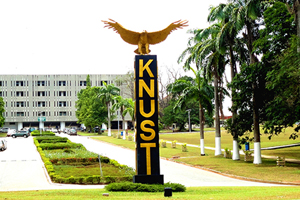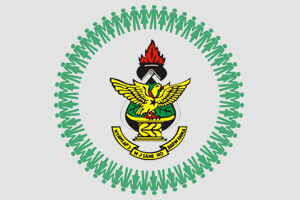Research & Innovation

Phytochemical constituents and some biological activities of selected medicinal plants from Ghana
Dr Evelyn Afua Mireku
PhD. (Pharmacognosy), B. Pharm (Hons.), mPSGH
Abstract
Among all naturally derived drugs, higher plants have retained a historical significance as the most important sources of novel compounds useful directly as medicinal agents or as lead compounds for drug discovery. Ethno-botanical surveys report the folkloric uses of three Ghanaian medicinal plants namely, Anopyxis klaineana (Pierre) Engl. (Rhizophoraceae), Hexalobus monopetalus (A. Rich.) Engl. &Diels (Annonaceae) and Landolphia heudelotti A. DC. (Apocynaceae) in the treatment of a variety of ailments including skin, respiratory and sexually transmitted infections, pain, arthritis and as wound healing agents. In this study, these plants were investigated for some of their biological activities and phytochemical constituents.
The methanol and ethyl acetate fractions of A. klaineana stem bark at 300 mg/kg inhibited peak inflammatory responses and total paw oedema by 62.40 ± 6.32 % and 49.10 ± 10.31 % respectively in the carrageenan induced paw oedema assay. The total phenolic content and antioxidant capacity of the crude methanol extract were determined to be 110.21 ± 10.15 mg/g (tannic acid equivalent) and 110.6 ± 11.15 mg/g (ascorbic acid equivalent) respectively. The extract also scavenged DPPH free radicals with IC50 of 2.71 ± 0.21 µg/mL. The ethyl acetate fraction showed antimicrobial activity against Staphylococcus aureus and Streptococcus pyogens with MIC of 312 µg/mL. The ethyl acetate fraction of H. monopetalus exhibited antimicrobial activity against S. pyogens and Bacillus subtilis with MIC of 312 µg/mL. The crude methanol extract was found to have a total phenolic content of 66.19 ± 21.15 mg/g (tannic acid equivalent) and scavenged DPPH free radicals with IC50 of 10.1 ± 1.26 µg/mL. The total antioxidant capacity was determined to be 77.1 ± 14.15 mg/g (ascorbic acid equivalent). The methanol fraction of L. heudelotti roots exhibited antimicrobial activity against S. pyogens and B. subtilis at 312 µg/mL. The total phenolic content and antioxidant capacity of the methanol extract were determined to be 98.14 ± 14.70 mg/g (tannic acid equivalent) and 108.8 ± 14.52 mg/g (ascorbic acid equivalent) respectively. The crude extract scavenged DPPH radicals with IC50 of 6.95 ± 0.81 µg/mL.
Phytochemical investigation of A. klaineana stem bark led to the isolation and characterization of six limonoids, five tirucallane triterpenes and one protolimonoid (including three novel tirucallane triterpenes). Methyl angolensate and 3, 23-dioxotirucalla-7, 24-diene-21-oic acid exhibited significant competitive PGE2 binding inhibition with IC50s of 10.23 μM and 3.63 μM respectively indicating their plausible anti-inflammatory effects. Most of the isolated compounds also demonstrated significant DPPH free radical scavenging property. From the stem bark of H. monopetalus, seven novel and two known prenylated indole alkaloids were isolated. These compounds are useful chemotaxonomic markers for the genus Hexalobus and closely related genera. From the roots of L. heudelotti, fourteen known compounds including neolignans, lignan, sesquilignans, an aromadendrane and a coumarin were isolated. The compounds showed DPPH radical scavenging and antimicrobial activities. The results of this study have given scientific justification to the traditional uses of A. klaineana, H. monopetalusand L. heudelotti as medicinal agents and also indicated that these plants have potential of being incorporated into the primary health care system of the nation in future.







